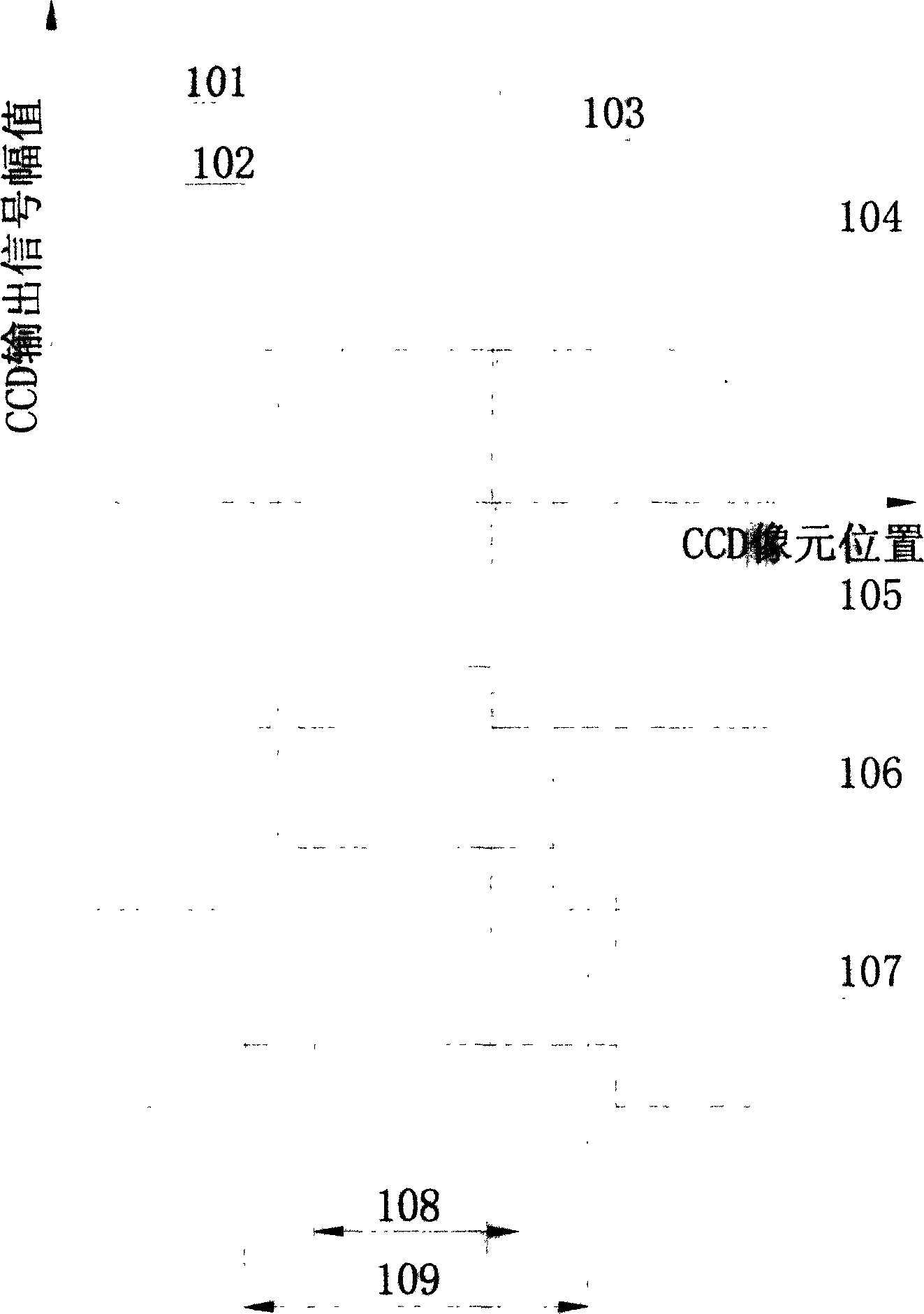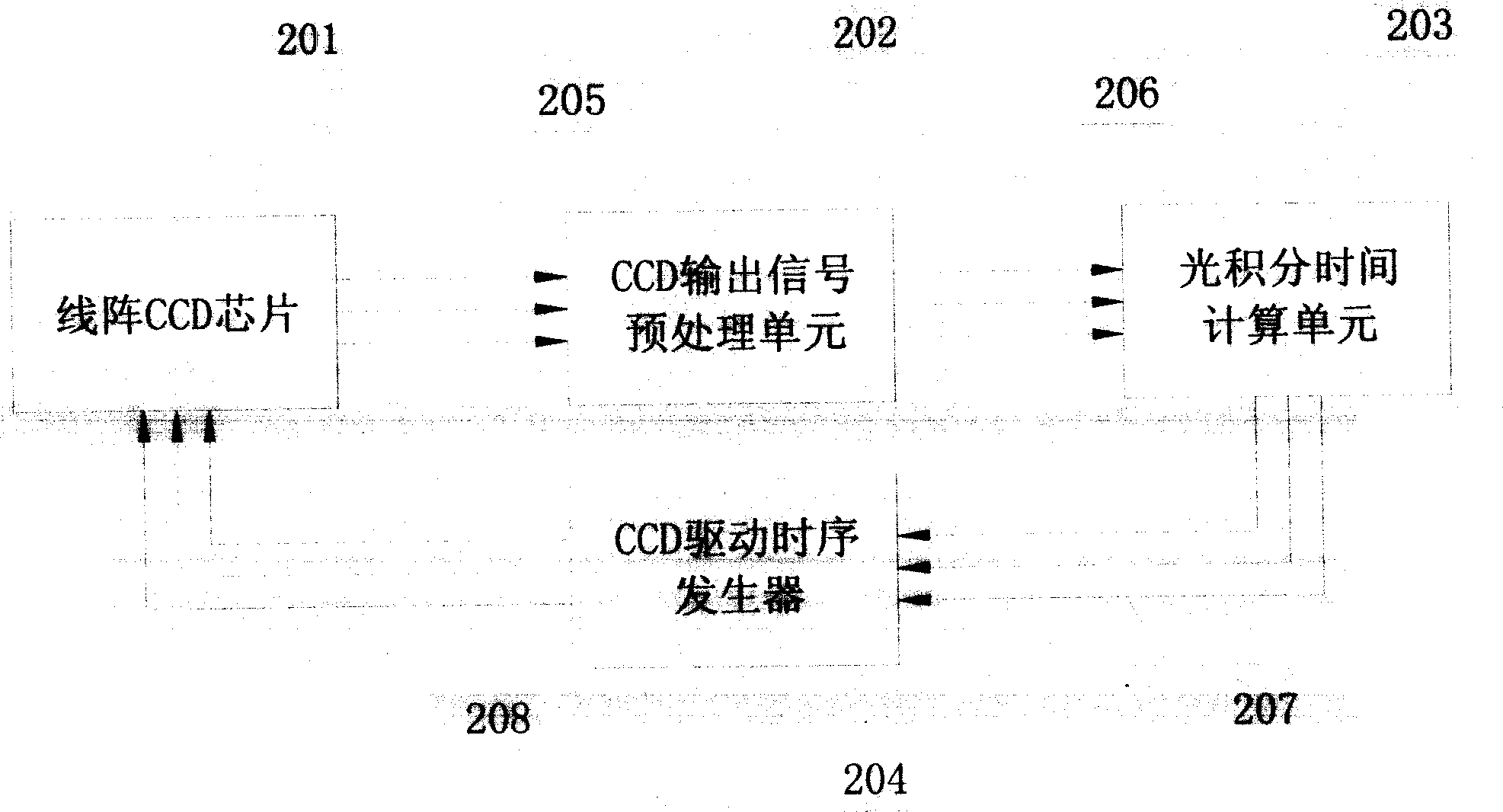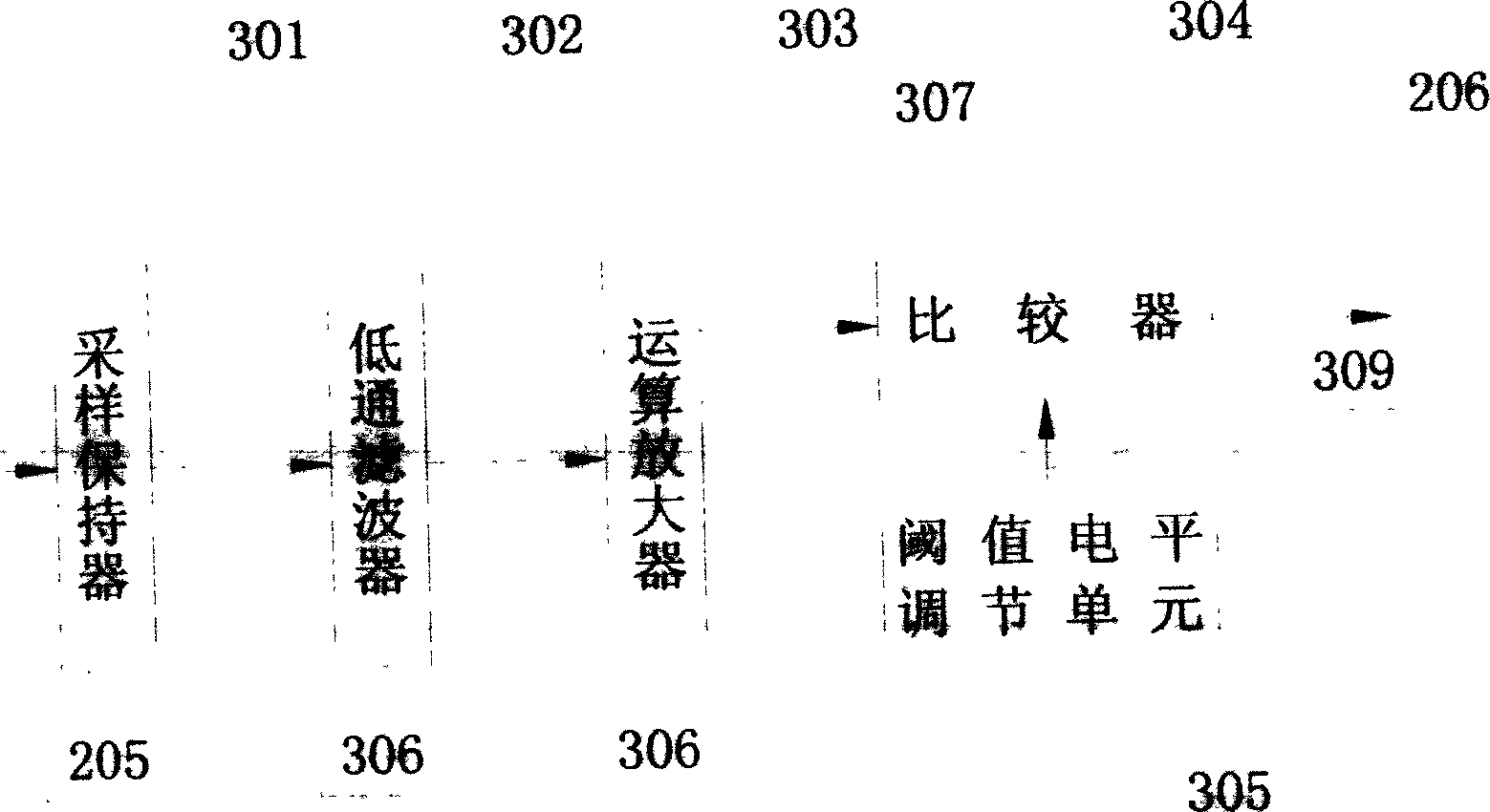Linear array CCD optical integral time self-adaptive control method and apparatus
A technology of self-adaptive control and integration time, which is applied in the control of exposure, optics, television, etc., can solve the problems that the measurement time is no longer applicable, the luminous intensity changes randomly, and cannot be effectively controlled, so as to overcome the adjustment range of light integration time, Overcoming the effect of rapid real-time measurement and overcoming image distortion
- Summary
- Abstract
- Description
- Claims
- Application Information
AI Technical Summary
Problems solved by technology
Method used
Image
Examples
Embodiment 2
[0086] The optical integration time adaptive control principle adopted in the second embodiment is as follows:
[0087] According to the CCD light integral charge formula
[0088] Q IP =ηqΔ neo AT C (1)
[0089] In the formula: η is the quantum efficiency of the material; q is the electronic charge; Δ neo is the photon flow rate of the incident light; A is the light-receiving area of the photosensitive unit; T C is the light integration time. It can be seen from formula (1) that when the CCD is determined, for each pixel, η, q, and A are constants. Under the premise of constant illumination conditions, Δ neo is also a constant, so Q IP with T C into a linear relationship; and because Q IP The output amplitude of the pixel corresponding to the CCD is linear, so T C It is also a linear relationship with the output amplitude, that is:
[0090] U∝T C (2)
[0091] Where: U is the CCD output signal amplitude...
PUM
 Login to View More
Login to View More Abstract
Description
Claims
Application Information
 Login to View More
Login to View More - R&D
- Intellectual Property
- Life Sciences
- Materials
- Tech Scout
- Unparalleled Data Quality
- Higher Quality Content
- 60% Fewer Hallucinations
Browse by: Latest US Patents, China's latest patents, Technical Efficacy Thesaurus, Application Domain, Technology Topic, Popular Technical Reports.
© 2025 PatSnap. All rights reserved.Legal|Privacy policy|Modern Slavery Act Transparency Statement|Sitemap|About US| Contact US: help@patsnap.com



